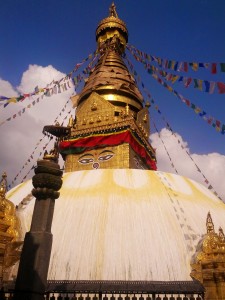A few years back, I visited the Indian town of Orchha. It has an amazing fort and temple, beautiful countryside; there are huge tombs where vultures fly at dusk. Despite this, Orchha is overshadowed by the nearby town of Kajuraho, famous for its erotic temple friezes. There were still hotels, restaurants and gift-shops in Orchha it was a much more relaxed place than Khajuarho.
I ate a couple of times in Orchha’s Blue Planet restaurant. It was originally called El Bulli until forced to change by representatives from Ferran Adrià’s restaurant. I learned it was now fending off action from another Blue Planet in Khajuraho
Not that it mattered, because the restaurant was due to be torn down. The local authorities were redeveloping the town, making formal gardens for the temples, aiming to bring in more tourists. And I knew that when I next came to this place next it would be different. This sleepy town would be more intense and more expensive.
I can’t help feel conflicted. I’d like to know this quiet town was waiting for me to return, even though I imagine a lot of people will be pleased to have more tourist money coming in. Besides, I would not have gone to Orchha myself if I hadn’t known there were places to stay.
Time after time, I arrive in a town that the Lonely Planet tells me has been ruined by development. Sometimes I’ve arrived prepared for disappointment and found breath-taking beauty. I don’t mind the presence of the hotels – for some people, my idyllic Orchha will seem very different to their ideal of the place.
